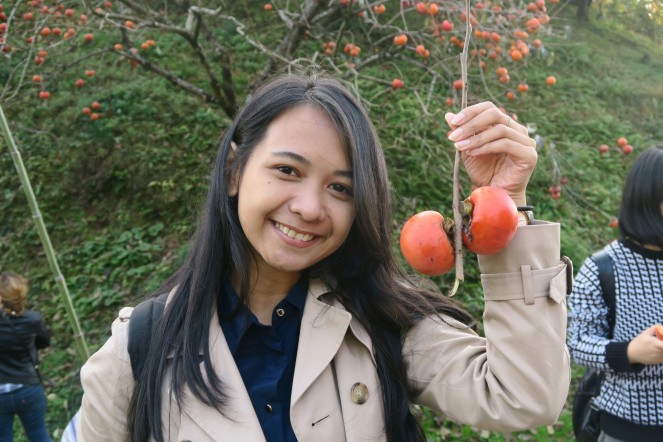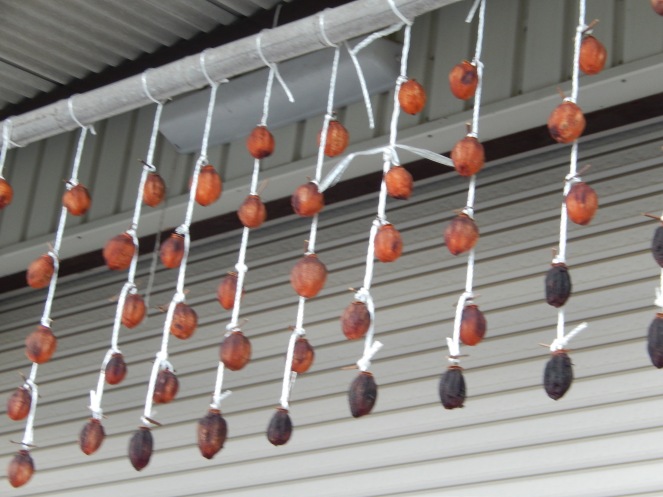This part is specialized to talk about persimmons, japan persimmons, or we can say kaki.
Back to Indonesia we have persimmons also, named kesemek. It looks like japan shape only not so good skin quality. Taste may be different as Indonesia one more sweet and wet while Japan is more crunchy and ideal sweet. Kaki is quite expensive, a shop near my house sell one fruits for 350yen! Well other shops might sell 400 yen for 2 fruits. Still expensive though, rather than indonesia fruits. But the taste is amazingly delicious. I guess it is also good for diet because it is naturally sweet.
So this is my first time gone kaki picking. Please enjoy my photo and explanation 🙂
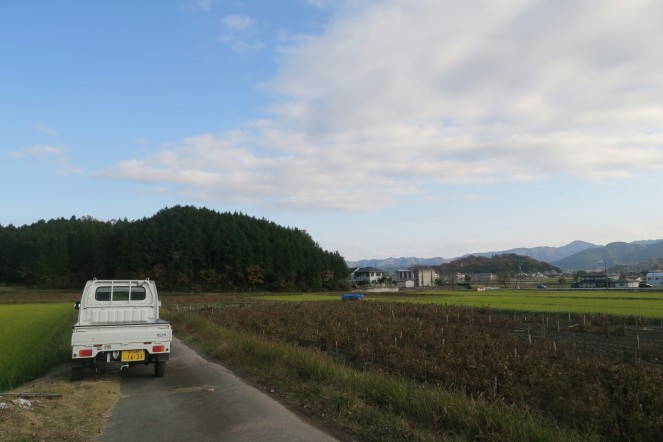
The village where we will do kaki picking looks so quiet and peaceful.

And we can spot easily the kaki tree, without leaves, it looks so attractive.
Kaki are in season around late autumn and winter when they are often seen hanging on while the leaves have all fallen.
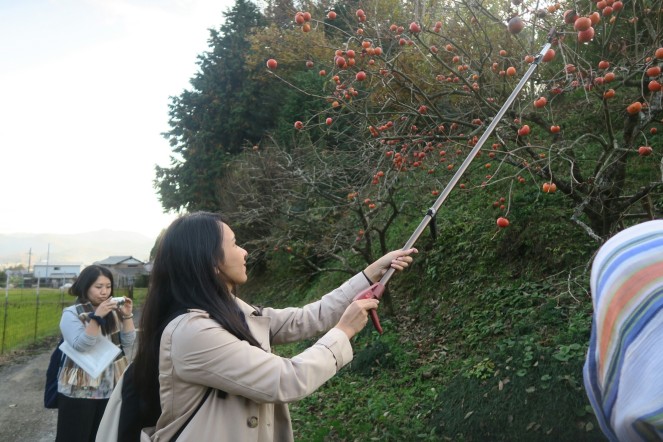
Originally coming from China, and it have been cultivatef in Japan since the 7th century. Kaki are most commonly enjoyed raw after being peeled and cut into pieces.
Yes, I can cut it nicely!

Do you know that kaki has 4 types cultivars?
Luckily, I get detail explanation from Mr. Adachi (my boyfriend’s father).
There are 4 types of kaki cultivars. Those are:
- Perfect bitter
- Unperfect bitter
- Unperfect sweet
- Perfect sweet
Kaki increases fructose (sweetness) and water-soluble tannin (bitterness) simultaneously with fruit growth, so slowly as fruit grows, bitterness will masks the sweetness.
On the other hand, seeds emit some substance to convert water-soluble tannin (bitterness) to unsoluble one (less bitterness). Then kaki fruits released bitterness and emphasize sweetness from the vicinity of seeds.
[I bet that means generally if the fruit has seeds might be sweeter than the fruits that not have seeds]
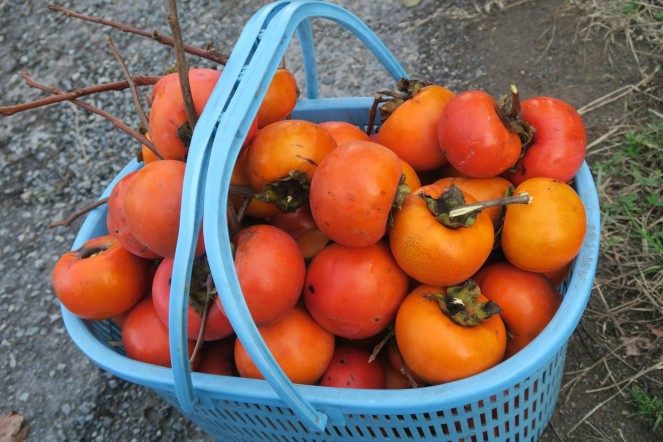
full baskets of kaki, yum yum yummmm..
So the type 2 and 3, the number and size of seeds affecting the sweetness factor. However in type 1. perfect bitter type, even they have seeds the insolubilization will never occurs (stay bitter), and in type 4. perfect sweet type, insolubilization proceeds naturally even if no seeds.
Although that 4 kaki cultivar types, they have one similarity.
Can you guess?
All types is edible.
Yes, you can eat all types, even the perfect bitter one.
Of course it needed artificial tannin insolubilization by alcohol, carbon dioxide, etc. but technically the statement is correct. hehehe..
Not only raw eaten, there is also one unique process make kaki more special. The technique name is :
Japan massaged dried persimmon : tsurushi-gaki
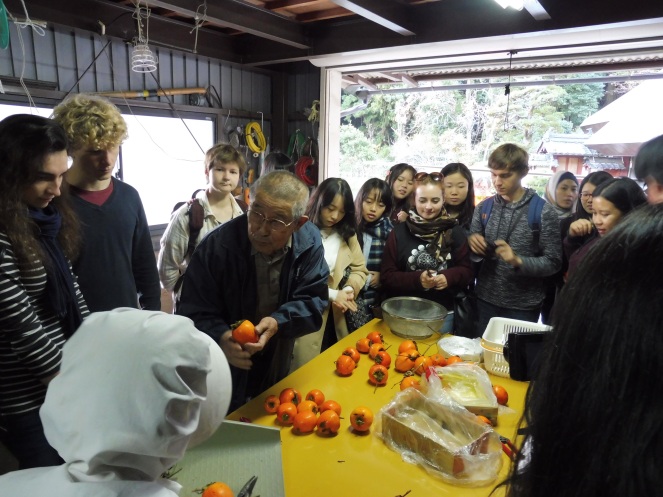
Tsurushi-gaki are persimmons that are peeled..
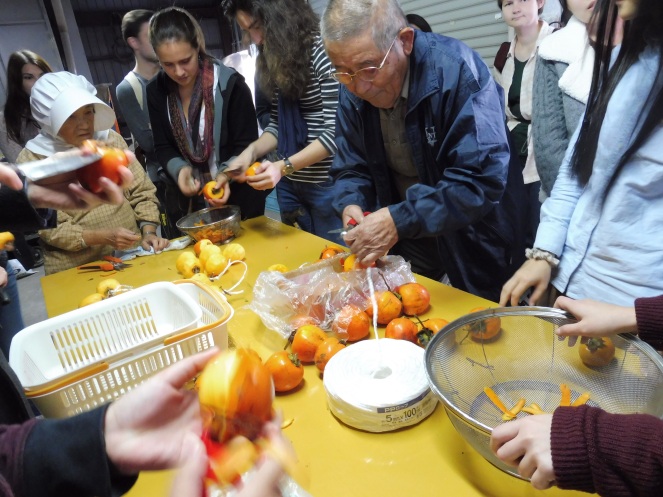
And tied to a rope, in certain ways..
And dried whole over period of several weeks through a combination of hanging and delicate hand-massaging, until sugars contained in the fruit form a delicate surface with a dusting that looks like frost.
Unlike sliced dried fruits, tsurushi-gaki are succulently tender and moist, with concentrated persimmon flavor.

The trip is finished, and the most happiest things is I can bring kaki which we already pick to home. At first I get 4 pieces, but the number grows larger and larger, finally I bring home 10 kaki. Wonder what I can make with all of this fruits.

All team finished making and (mostly) watching dried persimmon process.
It’s a happy day!


